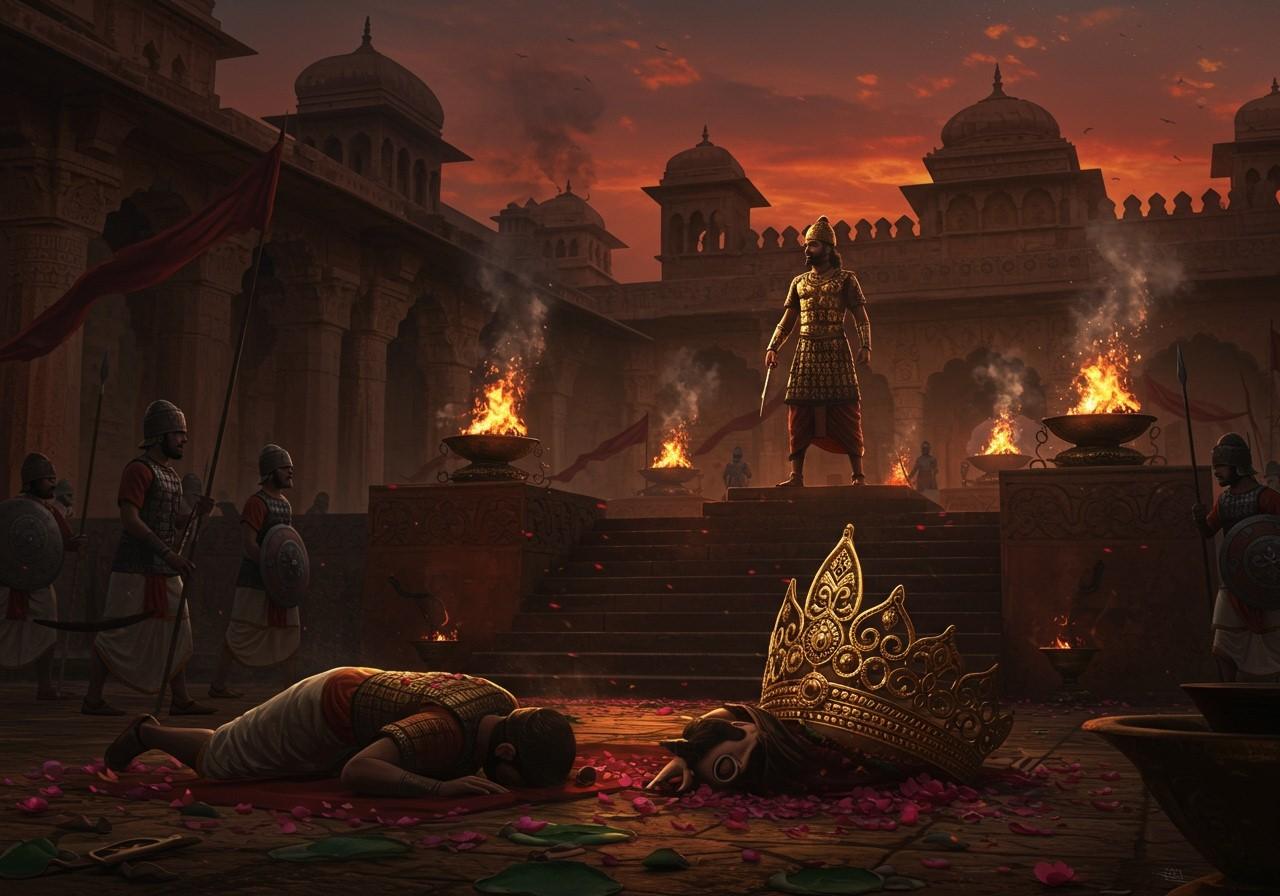The Decline of the Shishunaga Dynasty and the Rise of the Nandas

The Shishunaga Dynasty, a significant power in ancient India, ruled the Magadha region from approximately 413 BCE to 345 BCE. This article explores the factors that led to the dynasty’s downfall and the subsequent rise of the Nanda Dynasty. This transition represents a pivotal period in ancient Indian history, marked by significant socio-political shifts.
Background of the Shishunaga Dynasty
Founded by Shishunaga, the dynasty initially focused on consolidating power and expanding its territorial control. Key achievements included the annexation of the Avanti kingdom and the establishment of Pataliputra as a major city. However, internal challenges, such as succession disputes and regional rebellions, gradually weakened the dynasty’s grip on power.
Factors Leading to the Decline
Several factors contributed to the decline of the Shishunaga Dynasty:
- Internal Conflicts: Succession disputes and internal power struggles weakened central authority and destabilized the kingdom. These conflicts diverted resources and attention away from critical administrative and military matters.
- Administrative and Military Weakness: The dynasty’s inability to effectively manage administrative affairs and maintain a strong military led to a loss of control over its territories. This weakness made them vulnerable to both internal rebellions and external threats.
- External Threats: Pressure from neighboring states and tribes further weakened the dynasty. These external threats required significant resources to counter, exacerbating existing internal problems.
- Economic Instability: Economic instability and poor governance led to widespread discontent among the populace. This discontent further eroded the dynasty’s authority and created an environment ripe for change.
The Rise of the Nanda Dynasty
Mahapadma Nanda, the founder of the Nanda Dynasty, seized the opportunity presented by the Shishunaga Dynasty’s weakened state. He overthrew Mahanandin, the last Shishunaga ruler, around 345 BCE. Known for his aggressive expansionist policies, Mahapadma Nanda implemented significant reforms, including:
- Centralization of Power: Mahapadma Nanda centralized power and established a strong bureaucracy. This allowed for more efficient administration and control over the vast empire.
- Economic Development: The Nandas focused on economic development, improving agriculture, and expanding trade networks. These policies aimed to increase prosperity and stability within the kingdom.
- Military Strength: A large and well-equipped army ensured the Nanda Dynasty’s dominance over the region and protected against external threats. This military strength was crucial for maintaining stability and expanding the empire.
Key Figures in the Transition
Several key figures played crucial roles in the transition from the Shishunaga Dynasty to the Nanda Dynasty:
- Shishunaga and His Successors: While Shishunaga himself was a strong leader, his successors struggled to maintain the same level of control. Kalashoka, a notable successor, faced internal instability that significantly weakened the dynasty.
- Mahanandin: The last Shishunaga ruler, Mahanandin, presided over a period of further decline. His reign was plagued by internal conflicts and administrative weakness, which ultimately led to his downfall.
- Mahapadma Nanda: A shrewd and ambitious leader, Mahapadma Nanda seized the opportunity presented by the Shishunaga decline. His aggressive policies and focus on centralized power marked a significant shift in governance.
Impact and Legacy
The transition to the Nanda Dynasty brought significant changes to ancient Indian society, including administrative reforms, economic development, and a shift in military strategy. The Nandas’ focus on centralized power and economic prosperity laid the groundwork for future empires, most notably the Mauryan Empire.
FAQs on the Dynastic Transition
Here are some common questions about the fall of the Shishunaga Dynasty and the rise of the Nandas:
Who overthrew the Shishunaga dynasty? Mahapadma Nanda, the founder of the Nanda dynasty, overthrew the last Shishunaga ruler.
Why did the Shishunaga dynasty fall? A combination of internal conflicts, administrative weakness, external threats, and economic instability contributed to their decline.
What changes did the Nanda dynasty bring? The Nandas implemented administrative reforms, focused on economic development, and maintained a strong military.
Explore authentic puja items and cultural goods for your spiritual practices at poojn.in, India’s leading online store for cultural and religious products. Discover a wide selection of high-quality items, from puja kits to sacred texts, and connect with India’s rich heritage.
For those interested in learning more about ancient Indian history and performing traditional pujas, Mangalam Camphor can be an essential part of your ceremonies. Find it and other puja needs on poojn.in.


